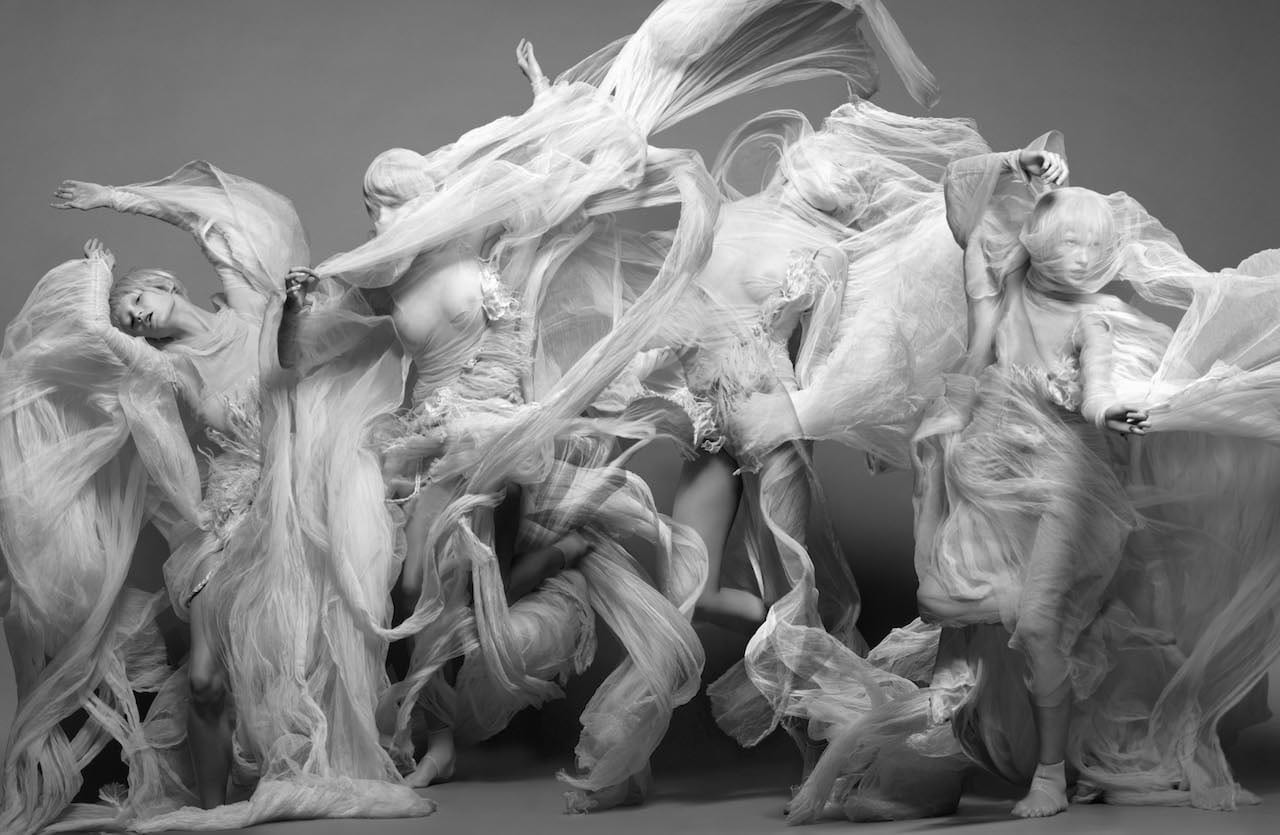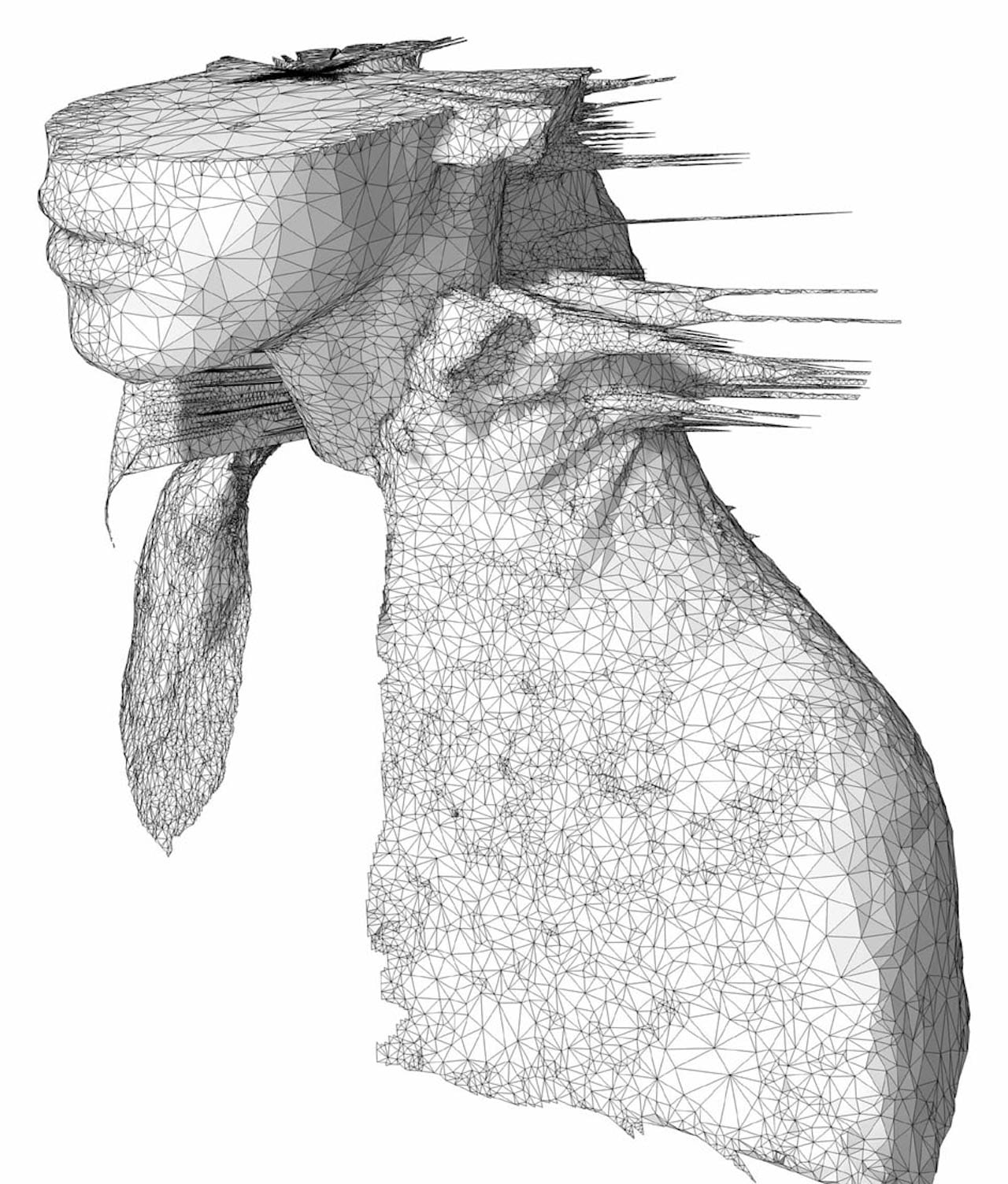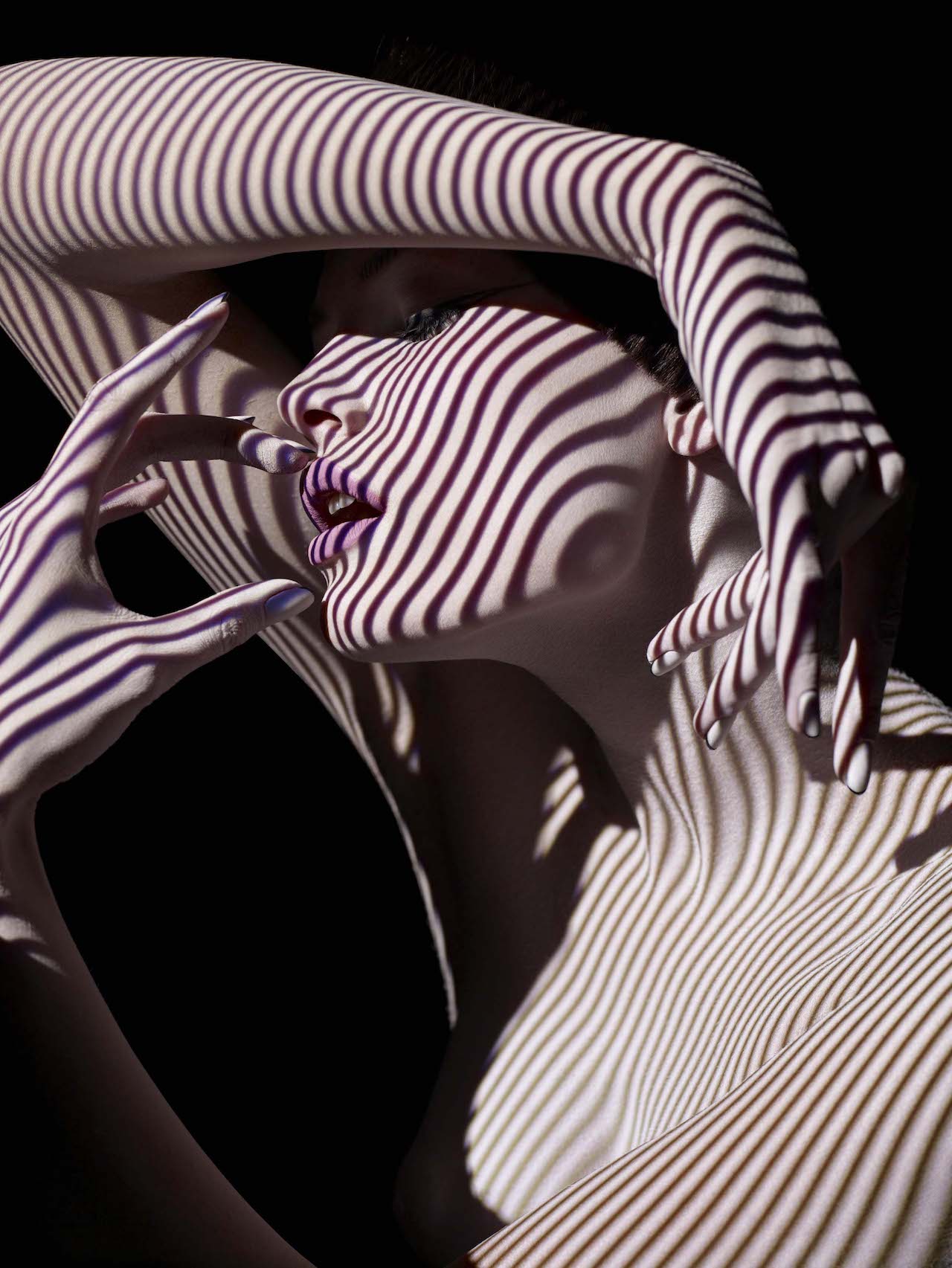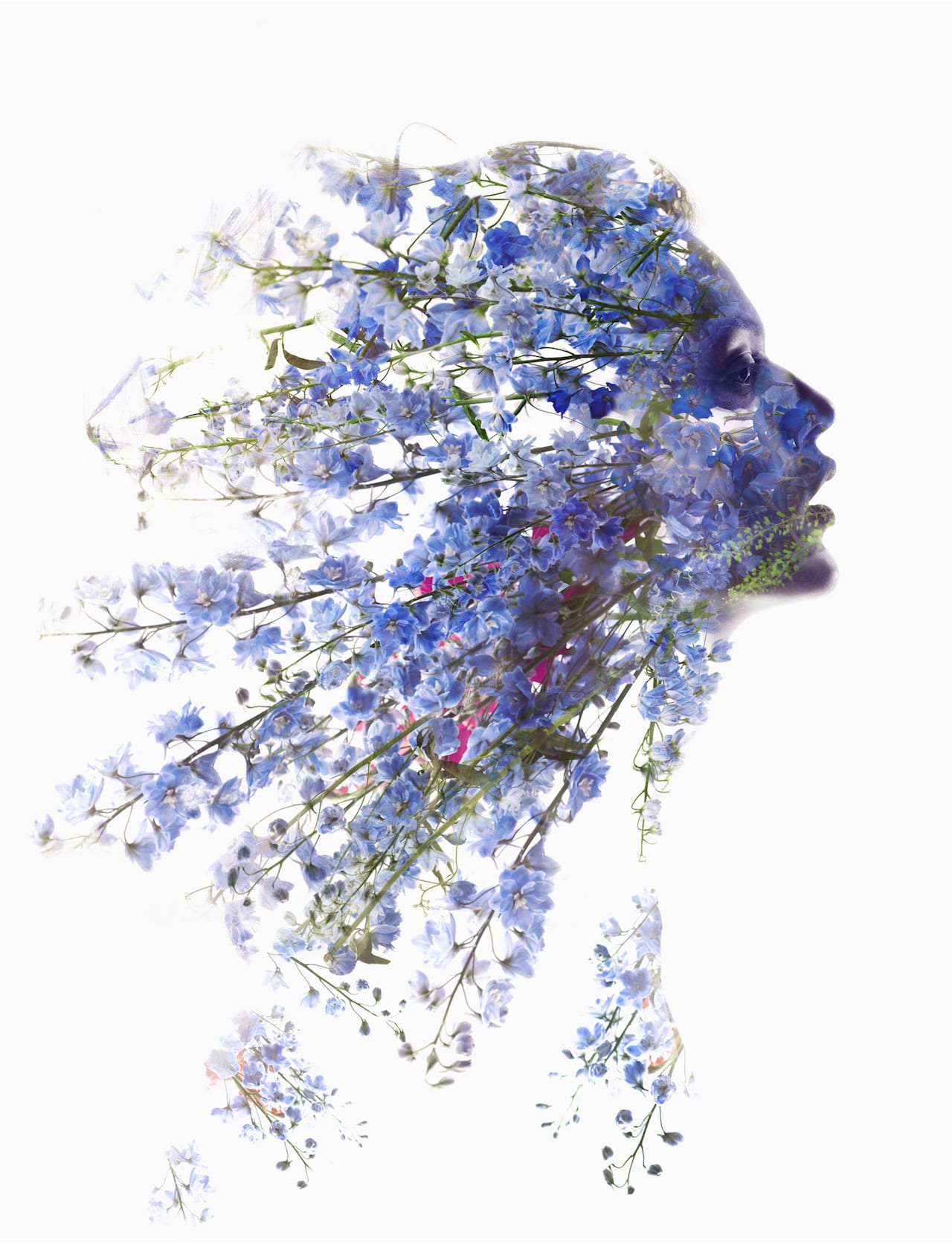Fashion photographer Sølve Sundsbø was awarded an Emmy in 2011 for his direction of a series of short films, shot for the website of the The New York Times Magazine. The series, 14 Actors Acting commissioned by Kathy Ryan, was acclaimed as a “new approach”, but the Norwegian photographer claims he simply “dabbles” in film.
Sundsbø’s photography career has been meteoric. Four months into a course at the London College of Printing, he attracted the attention of Nick Knight, and became his assistant for the next four years. Now he’s a regular in Italian Vogue, Visionaire, and W magazine. His commercial clients include Chanel, Hermès, Nike and Yves Saint Laurent and, outside the fashion world, Röyksopp, Friendly Fires and Coldplay have all chosen his work for their album covers.
Sundsbø first branched out into moving images in 1999, after i-D magazine’s founder and editor-in-chief Terry Jones, suggested it. The first film that he shot was a collaboration with designer Alexander McQueen for the Florence Biennale. Now he says he would create that film in a completely different way, “more thorough and just better”. Since making it, he has shot video campaigns for Chanel and Gucci, as well as many editorial “behind-the-scenes” films for magazine clients.

Sundsbø’s desire to try out film-making coincided with a massive upsurge in demand. “The internet is made for moving images more than still images,” he says, and adds that magazines acted quickly when this finally dawned on them. “For editorial shoots, they still want glossy, beautiful still images, but also a video that shows how we did it.”
Monetising this extra, and often expensive, content is a conundrum few titles have resolved but The New York Times is now operating a fairly successful paywall model. “If titles such as Vogue and The New York Times, which are serious in their fields, can find a way of financing their work using the internet and moving images, what a fantastic future,” says Sundsbø. “You don’t kill off what’s there and good, you start a whole new thing.”
As this comment suggests, he believes photography is as relevant as ever, despite the new technology, and he spends 97 percent of his time producing stills. In fact, he argues, the skills learnt for one medium inform the other, especially when it comes to lighting. “The luxury of doing a film is working with someone who really, really knows about lighting,” says Sundsbø.
“I can say to the DoP, I want it to look like this, and he will make it happen. It is such a treat. You can still set the mood and decide what you want, but then someone else can just do it.”
For his Emmy-award winning shoot for The New York Times Magazine, however, it was a case of the simpler the better. “For me, it was not about the lighting or the props, as I wanted what I was actually photographing to stand out,” he says. “Sometimes, it’s really nice just to leave it alone as it’s stronger by itself.” He tried to capture each of the films in one take, and this was kept to around 60 seconds.

Almost all of the films were shot using just one camera and one light, although it’s worth emphasising that the camera in question was the Epic from Red, which captures 120fps at a resolution of 14 megapixels. “The problem with 35mm film is that you need so much light to get good depth-of-field and that’s why you always have such big production teams on film sets,” says Sundsbø.
“You have got to have the creative lighting (because everything has to look good and you can’t just fix it later). Now though, with the new sensors, you can almost film with just a modelling light, and that’s very enabling.”
When stripped down, this camera is not much bigger than the Hasselblad that Sundsbø uses for his stills photography. The team “were pretty much given the Epic for free”, he says, but it was an ideal fit for this shoot as they were exploring the possibility of taking still grabs from the moving footage. In reality, he ended up using a still camera in parallel with the Epic instead, as it gave more flexibility on the day, and he also did separate stills shoots with some of the actors. Despite using this cutting-edge camera, the final films look exactly as they would have done on “really old-school film”.
When shooting stills, Sundsbø uses a digital back with his Hasselblad, arguing that it’s “more reliable and faster” than film, but he adds that what has changed his workflow significantly is knowledge, not technology. “We understand how to use the raw data better now,” he says. “The technology hasn’t changed that much in the past five years, but how we use it has.”
While the capture of the stills and films in 14 Actors Acting was pared down, the process of securing the subjects and negotiating how they were to appear on camera took months. The shoots were taken in New York, London and Los Angeles, but the team never lost sight of the hope of doing something unique. “We needed to find a new way of approaching portraits,” says Sundsbø.
“When you do actors’ portraits, it’s difficult because the actor comes as him or herself – they don’t come in character. Natalie Portman arrived at the studio as herself, not the Black Swan. You can’t just give the actors a character, and also they would need to be interested in it. At the same time, they want to look good, and interesting, so you can’t just get them to do whatever you want.
“The project took a lot of planning. We had to secure all of the talents and get their interest in a particular narrative. The genius was to present each actor with a cliché or icon – from a film, which opened up a world of possibilities. As soon as we gave them this idea, they could come in as themselves but still do a performance. All that said, a lot of the good ideas were rejected. The 14 that made it to the final cut are 14 of 100 ideas.”

Sundsbø collaborated with Spring Studios once again for the project, and says they played an instrumental role. “The editing process afterwards is what gives the film such significance,” he says. “I had a conversation with Nick Knight about how hard it is to find a good editor. In photography terms, it’s like you hand over your negatives to that person, they contact print the negatives, edit the images and then print the images. It’s as if you’re giving away all of that creative power to someone else. A good editor is priceless.”
As the Emmy testifies, though, the finished films are both polished and unexpected. “This is a new area of film – it’s not a narrative, art project or a movie,” says Sundsbø. “It needs a new take. I have friends who were talented TV directors in Norway 20 years ago. They’ve done commercials, music videos and short films, but only now are doing feature films. They understand moving images so well. The level of talent in moving images is so high so it’s very hard to compete. Instead you have to find something different.”
Nick Knight and Showstudio are the pioneers of fashion film but Sundsbø says there are relatively few other others so far. He recommends Ruth Hogben as one to watch, pointing to the films she and Nick Knight created for Lady Gaga’s Monster Ball world tour in 2009, and adds that new talent will rise up to meet the demand, just as music videos were made to satisfy the MTV generation.
“You have a whole wave of filmmakers who came from music videos then graduated onto feature films,” says Sundsbø. “David Fincher [director of The Social Network and The Curious Case of Benjamin Button] shot George Michael’s Freedom video. I’m really excited at the prospect there could be a whole new generation of people who, instead of doing fashion pictures, do fashion film. People will see that there are new ways of making short films – they will be a mixture of music media, art films, visual exploration and installations. These things will all come together.”
Key to these new talents is exploration – something Sundsbø fiercely maintains. “I think a really important part of my life is to stay as true to myself as I can,” he says. “I don’t believe what the press or other people say about me. What I’ve always wanted to do is stay original and break convention, though sometimes I do super- commercial fashion shoots for super-commercial magazines or super-commercial campaigns, and I find that interesting too, as it’s a craft.
“But when it gets really good is when you get the feeling you’ve created an image that is completely different, that tells a story and is something I’m proud of. Often though, it’s when you’re trying things out that you fuck things up. As you get more publicity and more people look at your work, this becomes harder to do. That’s why I think that there’s going to be a whole new generation of people who are unknown at the moment and so won’t be scared to experiment.”
And that’s the same spirit Knight recognised in his protégée: “I can always tell which of the assistants are going to do well because they have drive,” he said recently. “Add to that the fact that Sølve loves all things modern. He’s excited by the future. New technologies have entirely changed the photographic landscape and he’s someone who is embracing these different directions.”
www.solvesundsbo.com Beyond the Still Image by Sølve Sundsbø is on show in Milan from 15 November – 09 December, 2018. It’s part of the official programme for the PhotoVogue Festival, which is open from 15-18 November www.vogue.it/en/photo-vogue-festival/


